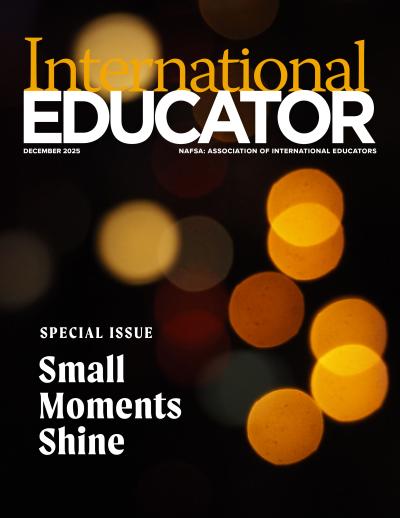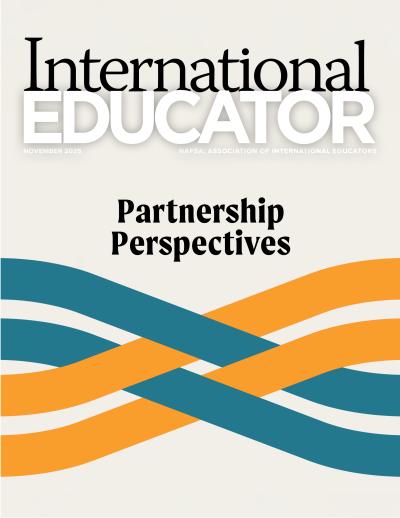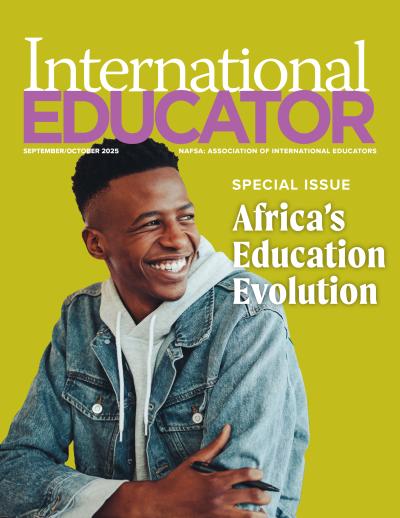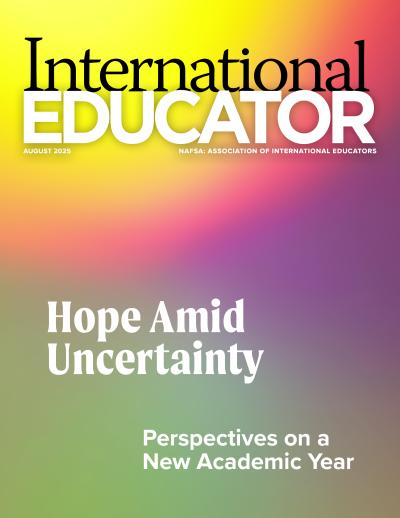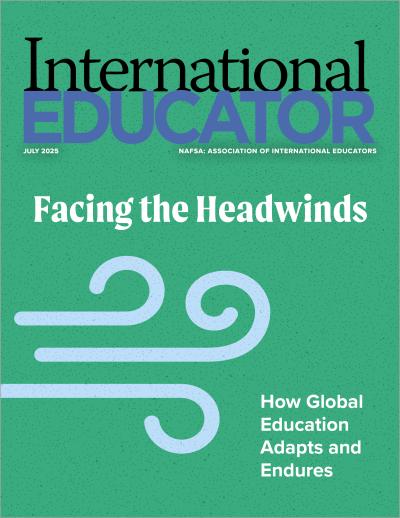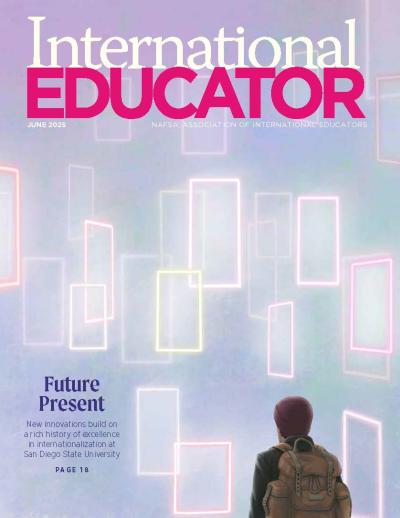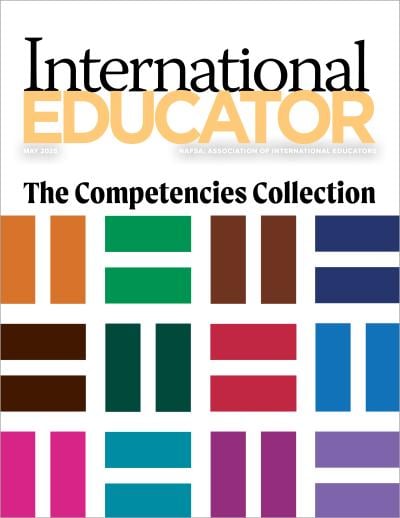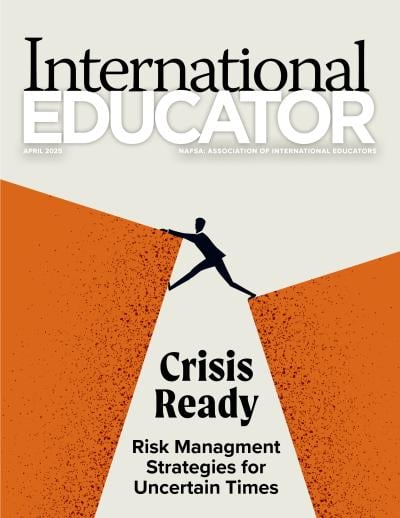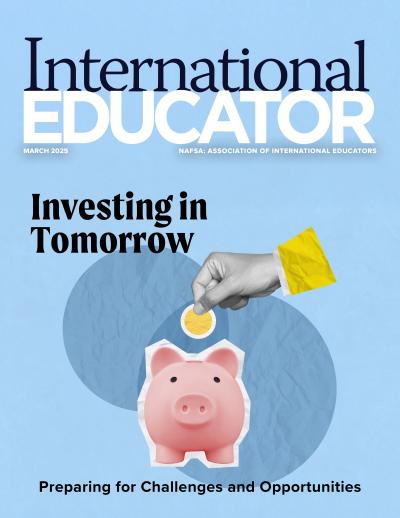New Allies: Two Perspectives on Stakeholder Engagement

Davidson College’s international education programs have strong support on campus and in its local North Carolina community, including a robust host family program. Six hundred miles north, Global Detroit, an “immigrant-inclusive” economic development initiative that works across much of Michigan, has forged wide-ranging partnerships among employers, policymakers, and universities since its founding in 2010. Yet, both are now seeking new allies and talking with existing ones in fresh new ways.
“The nature of what we’re sharing with stakeholders and how we’re engaging with them is changing,” says Angie Edwards, Davidson’s director of international student engagement.
Within U.S. institutions and beyond them, advocates of internationalization are responding to this year’s dramatic policy shifts as well as to broader, ongoing needs. In both cases, they say, a larger stable of stakeholders is needed to support internationalization during turbulent times.
“International education was seen as a positive contributor to our economy and has never had an existential fight until now,” says Steve Tobocman, executive director of Global Detroit.
Contextualizing Change
The rapid pace of changes—and at times, reversals—in immigration and regulatory policy have provided an opening for new ways of engaging existing stakeholders.
“We’ve spent more time contextualizing how changes in the immigration landscape impacts our students, and how that impacts the institution,” Edwards says.
This summer’s pause in visa appointments and other immigration developments present both an opportunity and a challenge. Internal stakeholders at institutions may “hear the headlines. . . but they may not understand what [they mean] on the ground for our students, and ultimately the institution, until we offer that additional context,” Edwards says. At the same time, she adds, it’s important to “strike a balance” between contextualizing fast-changing events and ensuring that stakeholders recognize that pronouncements “may be not final.”
“International education was seen as a positive contributor to our economy and has never had an existential fight until now.” —Steve Tobocman
Giving context to these changes should also take place within the international office—and reinforce the need to seek out new stakeholders. “It’s more important than ever to expand our network of advocates on and off campus,” Edwards asserts.
Tobocman, who served as majority leader in Michigan’s legislature before joining Global Detroit, agrees, noting that there’s growing awareness of the need to advocate in the broader community.
“We need chambers of commerce and economic development organizations, and mayors and governors to be part of standing up for international students,” he says. Noting that the Detroit Regional Chamber, the city’s mayor’s office, and a host of other regional nonprofits and economic development organizations were instrumental early partners in Global Detroit, he adds, “They’re all super eager to partner.”
Identifying New Stakeholders
To cultivate new partners and deepen existing relationships—on campus and beyond—international educators should “pause and do an environmental scan,” Edwards advises.
“Over the years, as things evolve, I find it helpful to pause and take stock of the current landscape and ask if there are new stakeholders we need to be engaging with,” she says.
Internally, new academic programs represent one opportunity for engagement. Athletic departments are also emerging as important stakeholders, in part because international students are often recruited as athletes—and recent immigration policy changes could jeopardize team rosters. But the potential benefits extend beyond student athletes, as attending games can help other international students acclimate to campus culture and build community, Edwards says.
“Over the years, as things evolve, I find it helpful to pause and take stock of the current landscape and ask if there are new stakeholders we need to be engaging with.” —Angie Edwards
Career services offices represent another place for new or strengthened collaboration. Tobocman argues that these offices are often focused on scale and lack the capacity to help the employers they work with to understand employment opportunities for international students. Another strategy, Edwards relays, is to make direct connections with local industry to “dispel myths and misunderstandings about the work authorizations international students can have and make inroads there,” she says.
That’s the reason Global Detroit exists. Initially the brainchild of seven international offices at colleges and universities across Michigan, the organization now works with 1,000–5,000 international students each year. Through its Global Talent Retention Initiative (GTRI), it offers job fairs and programs like its Global Talent Accelerator, which focuses on developing soft skills that help international students get hired and acclimate to the workplace.
Global Detroit’s work with international students reflects the fact that while other immigrant populations, such as refugees, have existing support structures to place them in communities, connecting international students with employers is often an afterthought. Tobocman says. “But do the math—international students are a huge population and [generate] a huge economic benefit.”
“The talent crisis after COVID-19 has permanently altered the business community’s interest in high-skilled immigration.” —Steve Tobocman
Educating individual businesses about international students has been a challenge, but labor market fundamentals have changed, according to Tobocman. “The talent crisis after COVID-19 has permanently altered the business community’s interest in high-skilled immigration,” he says.
Tobocman advises that international educators should work with local economic development organizations. They should also partner with other college departments, such as advising and career services, to help international students understand employment opportunities such as optional practical training (OPT), curricular practical training (CPT), and needed career skills, earlier during their time on campus. In return, he says, institutions may find the local business community to be a strong voice for their students.
“We need to bring the private sector to the table on these issues,” he says.
Sticking with the Fundamentals
Despite current volatility, ongoing engagement strategies still matter most. One key to successful long-term partnerships is differentiating messages for different stakeholders. Students, Edwards says, require the “nuts and bolts” of what they need to do. And while some internal and external partners need to understand the effects of immigration policy changes on enrollment or state and local economies, others can be enlisted to help students acclimate to a new culture.
Data to make the case has always been important but has now become critical, according to Tobocman. “Our sophistication at messaging has grown over time,” he says. “We’ve always had some numbers to point to, and the suite of data is increasing.” But, he adds, it’s just as important to supplement data—like NAFSA’s International Student Economic Value Tool—with personal stories. “We’ve met all kinds of business owners who were international students who got OPT, and 10 years later had started their own firms and had [hundreds] of people working for them,” he says.
And even as international educators and their allies reach out to new stakeholders, keep the end goal in mind: “to create the kind of environment where international students can thrive no matter what’s happening externally,” Edwards says. New advocates, she adds, help ensure “it’s not just us beating the drum.” •
NAFSA Resources
- NAFSA’s International Student Economic Value Tool
- Senior International Officers: Essential Roles and Responsibilities, “Stakeholder Engagement” chapter
- NAFSA’s Guide to International Student Recruitment, Fourth Edition, “Navigating Stakeholders” chapter
- Engaging International Alumni as Strategic Partners
- Leadership Essentials for Comprehensive Internationalization course
About International Educator
International Educator is NAFSA’s flagship publication and has been published continually since 1990. As a record of the association and the field of international education, IE includes articles on a variety of topics, trends, and issues facing NAFSA members and their work.
From in-depth features to interviews with thought leaders and columns tailored to NAFSA’s knowledge communities, IE provides must-read context and analysis to those working around the globe to advance international education and exchange.
About NAFSA
NAFSA: Association of International Educators is the world's largest nonprofit association dedicated to international education and exchange. NAFSA serves the needs of more than 10,000 members and international educators worldwide at more than 3,500 institutions, in over 150 countries.
NAFSA membership provides you with unmatched access to best-in-class programs, critical updates, and resources to professionalize your practice. Members gain unrivaled opportunities to partner with experienced international education leaders.





